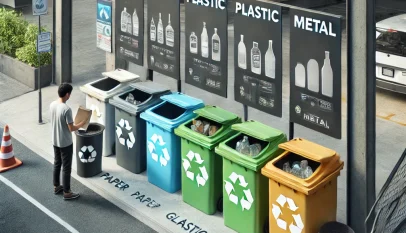Ceramic Coating Car: The Ultimate Protection for Your Vehicle’s Paintwork
Ceramic coating offers car owners a durable and effective solution for protecting their vehicles. This advanced technology creates a chemical bond with the car’s paint, providing resistance to dirt, UV rays, and minor scratches. As a result, cars maintain their shine and finish for a longer period, reducing the frequency of washes and detailing.
Investing in ceramic coating car can enhance the longevity of a vehicle’s appearance, making it an appealing choice for enthusiasts and everyday drivers alike. The coating is not just about aesthetics; it also provides a barrier against environmental contaminants that can damage the paint over time.
Understanding the advantages and application process of ceramic coating can help car owners make informed decisions about their vehicle care. This blog post will explore how ceramic coating works, its benefits, and what to consider when applying it to a car.
Benefits of Ceramic Coating
Ceramic coatings offer significant advantages for vehicle protection and maintenance. They enhance the durability of the car’s exterior and simplify cleaning routines while improving its appearance.
Enhanced Paint Protection
Ceramic coatings create a strong barrier against environmental contaminants. They protect against UV rays, acid rain, bird droppings, and tree sap. This shield helps prevent oxidation and fading.
The microscopic structure of ceramic coatings bonds with the paint, making it harder for dirt and grime to accumulate. This protective layer helps maintain the integrity of the paint over time. Investing in ceramic coating can prolong the lifespan of the vehicle’s finish.
Ease of Cleaning
With a ceramic coating, cleaning becomes a simpler task. The hydrophobic properties repel water and dirt, causing them to slide off surfaces easily. This means reduced effort when washing the car.
Routine washes require less time and fewer cleaning products. Stains and contaminants don’t adhere as strongly, minimizing the need for harsh chemical cleaners. This can lead to cost savings on car maintenance in the long run.
Improved Aesthetics
Ceramic coatings enhance the visual appeal of a vehicle. They provide a glossy finish that makes the paint look vibrant and lustrous. This added shine can significantly elevate the overall look of the car.
The coating also helps maintain clarity, reducing the risk of fading due to sun exposure. Car enthusiasts often appreciate how ceramic coatings preserve the aesthetic quality of their vehicles, contributing to a more polished and attractive appearance.
Application Process
The application of ceramic coating involves several critical steps that ensure optimal adhesion and effectiveness. Each phase—from preparation to curing—plays a significant role in the final outcome.
Preparation Steps
Proper preparation is essential for achieving optimal results with ceramic coating. Begin by washing the vehicle thoroughly to remove dirt, grease, and other contaminants. A pH-neutral car shampoo is ideal to prevent any damage to the paint.
Next, the surface should be decontaminated using a clay bar. This removes embedded particles that could interfere with bonding. Afterward, inspect the paint for imperfections such as scratches or swirls; these should be corrected with polish to ensure a smooth final finish.
Once the surface is prepared, it’s crucial to dry the vehicle completely. Use microfiber towels to prevent water spots, as any residue can affect the adhesion of the ceramic coating.
Application Techniques
Application techniques directly influence the performance of the ceramic coating. It is recommended to work in small sections, typically around 2×2 feet. This ensures that the product does not cure before it is spread evenly.
Using an applicator pad, apply the coating in a crosshatch pattern, which helps achieve even coverage. It is essential to avoid over-saturating the applicator to prevent dripping and uneven application. Wipe off excess product promptly with a microfiber towel to avoid high spots.
Following the manufacturer’s guidelines on the number of coats and layer thickness is crucial. Generally, two to three coats offer sufficient protection and durability.
Curing Time Considerations
Curing time greatly impacts the effectiveness of ceramic coatings. After application, the coating requires an ideal environment with stable temperatures and low humidity for optimal curing.
Most products suggest a cure time of 24 to 48 hours before exposure to water. Full curing may take up to a week, during which it is recommended to avoid washing or exposing the vehicle to harsh conditions. Specifically, it’s important not to drive the vehicle in rain or snow until the coating has fully cured, as this can compromise its integrity.
Basement Renovation Hamilton: Transforming Unused Space into Functional Living Areas
Renovating a basement in Hamilton can transform an underutilized space into a functional a…














